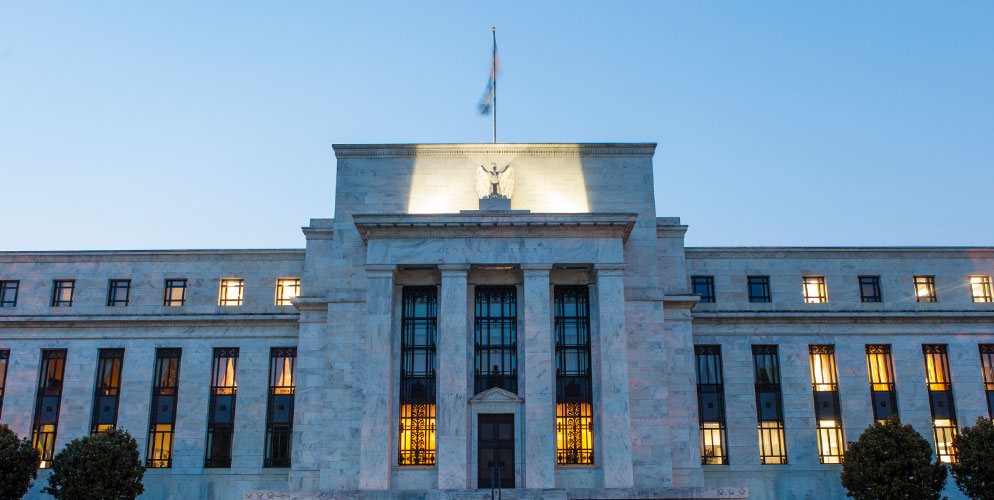Since January’s FOMC, there have been several economic blows to the rate-cut camp, with the one-two punch coming from January’s strong payrolls print and the recent hot CPI report (headline and core) for last month, pushing the 10-year Treasury yield higher to levels last seen in December 2023. Contracts pricing has been quite reactionary with chances of a March rate cut now considerably lower, and prospects for a May pivot cut in half since just before the release of last month’s CPI. June shows an above-50% probability for the first rate cut according to the futures. Whether the below-consensus retail sales for January portends a trend of consumer retrenchment will largely be determined by future labor market developments, evolving savings and personal debt patterns, and overall economic sentiment. The new data points seem to lend credibility to the Fed’s watchful posture and align with our position that the Central Bank will likely stay bound to its own schedule for inevitable rate cuts and not be tethered to market expectations. We believe that the Fed has sufficient runway to adjust to any threats of re-accelerating inflation. Although a move to more restrictive territory has returned to the conversation, the odds of another rate hike are still extremely low at this time, but perhaps higher-for-longer, followed up with a smaller number of rate cuts is a more probable scenario. We continue to see the first rate cut arriving during the second half of 2024.
Although the CPI report adds to the unpredictability of inflation’s journey towards price stability, January typically comes with seasonal adjustments given beginning-of-the-year price increases, and one hot print does not set a trend. We are also not convinced that a strong CPI would necessarily lead to a commensurately healthy PCE deflater, yet this data point scheduled for release at month-end will be thoroughly dissected. Six-month PCE is presently running below 2%. Parsing the CPI data, there is clear evidence that core goods disinflation continues to make progress, while services inflation remains problematic, particularly as this sector is less responsive to elevated financing costs. Although housing cost pressure played into the higher-than-expected retail price report, the PCE deflator contains a smaller housing component. Against this backdrop, we can argue that the remaining disinflationary legs will be wobbly with a rocky road to the realization of the Fed’s call for consistent progress on containing upward price pressure, yet the proverbial “soft landing” does not have to be compromised. Layoffs seem to be down year-over-year, but they are still very much a factor in the labor market mix, and while jobs seem to be displaced by technological advancements and AI, cost cutting is still prevalent. While GDP may expand beyond forecast throughout 2024, we continue to expect overall annualized growth holding to modest single digits. Corporate engagement may not fare as well as consumer performance given lingering challenges presented by still-costly financing terms with the attendant diminution of long-term investment opportunities. By most measures, inflation has been well-contained without compromising growth in a calamitous manner. Characteristically, the U.S. consumer drove the latest GDP prints and our base case continues to see resilient spending patterns across this economic cohort, albeit with moderating growth conditions.

The bond markets have little choice but to adjust accordingly to the evolving monetary policy bias. Since the beginning of the year, muni yields are about 20-basis points higher, outperforming UST on the sell-off. While the end of 2023 witnessed a lot of green across fixed income cohorts, year-to-date performance is decidedly in the red. Through February 15, munis have lost 62-basis points, while UST are down 175-basis points as both asset classes are a good distance from their 2023 year-end returns of 6.4% and 4.05% respectively. The heaviest weakness can be found on the long end of the muni curve, given the timing trepidations over rate cuts with duration extensions falling out of favor for the time being and short-tenors outperforming. On Thursday, munis firmed up with modest bumps along the curve. New-issue activity saw good reception on the week and secondary business caught a respectable bid as cash pursued opportunistic deployment. Mutual fund flows have been trying to recover, but the rate anxiety has created a challenging backdrop with net outflows holding course. Friday’s above-consensus PPI for January provided a weaker tone just ahead of the three-day holiday weekend, and time will tell just how far the weakness will extend.
While we do not see ratios reaching fair value range anytime soon, any material shift in technicals could bring ratios a bit closer to normalization.
With continued supportive technicals and available sidelined cash, there is runway for munis to outperform on market weakness. Currently, muni market valuations are being driven by technical dislocations that may not normalize so quickly, and in the absence of any significant credit event, muni spreads can be expected to stay range-bound. The sell-off in January prevented a “January effect” with attendant positive returns for munis last month, yet we will be closely watching the supply/demand dynamics over the near-term. Should rate volatility subside, a net negative supply of $14.2 billion per Bloomberg over the next 30 days should be accretive to muni returns given heavy reinvestment needs, but we must be mindful that we are quickly approaching the April 15 tax filing deadline, a time normally associated with more active muni selling to cover new tax liabilities. Absent the noted technical tailwinds, we suspect that muni performance would be less favorable. As we know, episodic rate volatility could push issuers to the sidelines, yet investors may find value on the weakness with an eye on booking more compelling tax-adjusted cash flows. We would observe, however, that issuers should remain more sensitive to rate movements for refunding purposes as opposed to new money issuance.
These very same market technicals have framed out rich relative value ratios, which have contributed to certain institutional resistance that had backdropped much of 2023. Helping to escort the ratio curve to lower levels is a shifting muni buyer base from mutual funds to SMAs and ETFs. From our seat, we see more of these allocations taking hold throughout 2024. While we do not see ratios reaching fair value range anytime soon, any material shift in technicals could bring ratios a bit closer to normalization. Insurance companies had also pared muni exposure in response to higher loss exposure and tax structure issues further extended disincentives for muni allocations. Banks had stepped away to some extent given the dislocations of last March from SVB and the easing desirability of tax-exempt munis given the cost-of-funds for banks and taxable equivalent yield analysis. We also saw some other institutional buyers take to the sidelines amid heavy market volatility.

Jeff Lipton
Title:Managing Director, Head of Municipal Credit and Market Strategy
85 Broad Street
26th Floor
New York, New York 10004

